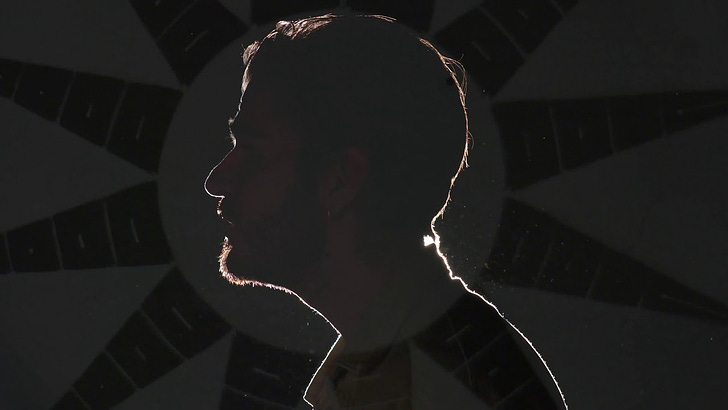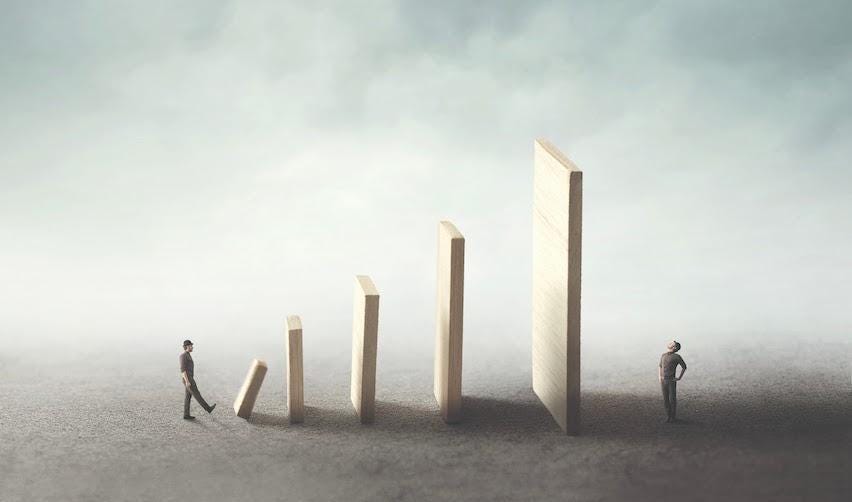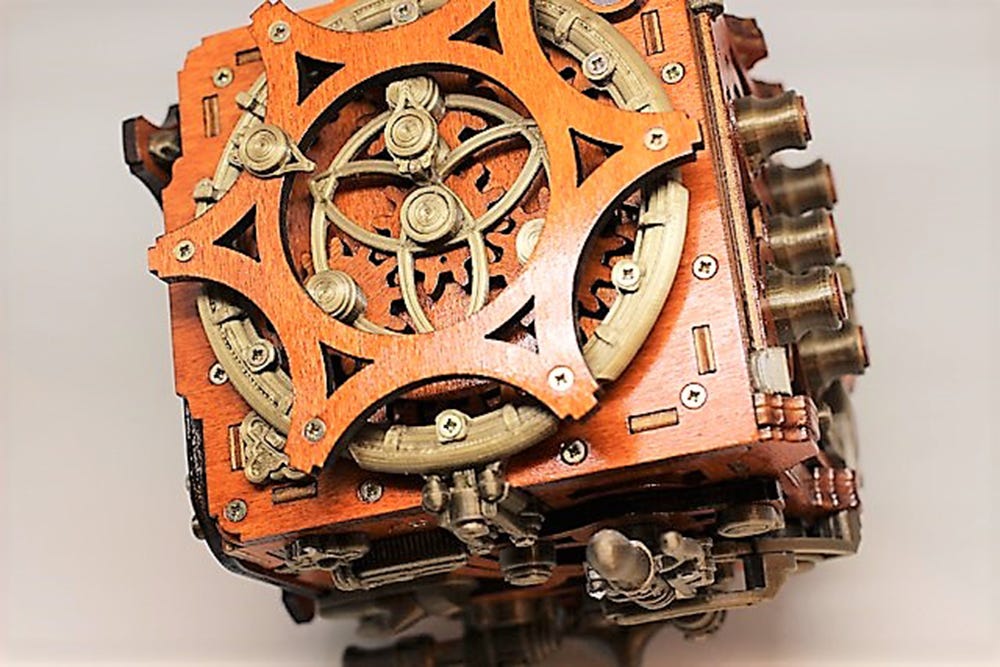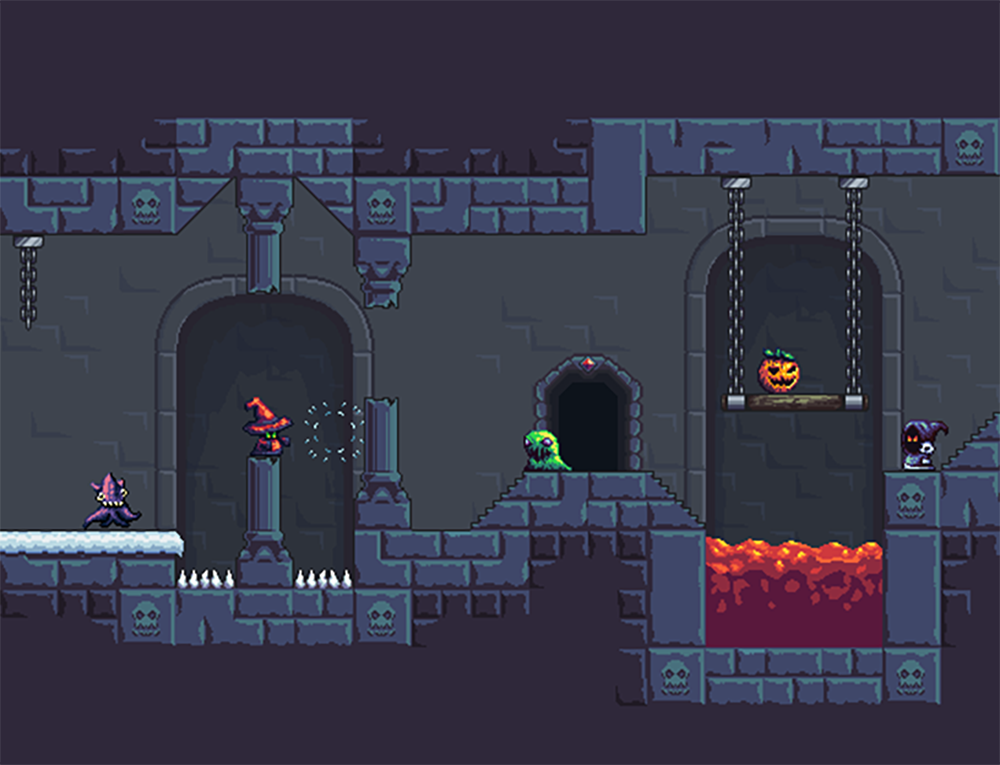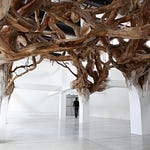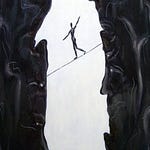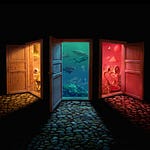An act of creation is an act of discovery; all of the possibilities always existed; You merely stumbled upon that particular configuration.
Every decision you make, you are cutting off branches from an ever sprawling tree. Those decisions aren’t stand alone; they impact all of the future choices you make as well.
If you were designing the board game checkers, there’s a series of decisions you’re presented with. For example, does the board have a grid? Is the movement freeform? Once you decide that it has a grid, you’re then left with choices around how long and wide that grid is.
The number of grid squares dictates how many pieces could fit on the board. Can pieces be placed in the same square as one another? In which situations can that happen?
Once you decide that pieces can only move diagonally forward, you’re now presented with a problem. What happens when an opponent’s piece blocks the space you could move to? You could make it so that the piece is blocked and can’t move, but what is the game's point? How do you win? If you decide that the game's goal is to take all of the opponent’s pieces, you need to develop a way to take them.
You could take the opponent’s pieces by moving into the same square as them, you could jump over the piece, or you could surround them in some way.
Once you decide that pieces are taken by jumping over the space that a piece is in, you now need to determine what happens if another piece is blocking the square you will move to. Does it stop you from being able to take the piece? Do you jump further and take both pieces at once?
What happens afterwards? Does it allow you to chain multiple moves into one another? Does your turn immediately end?
Once all the basics have been worked out, you’re confronted with another problem; what happens when one of your pieces reaches the end of the board and they can no longer move forward? Does the board wrap around so that you can move into squares on the other side? Can that piece begin moving in the opposite direction?
If you decide that it can change direction, how do you differentiate that piece from one which can’t move backwards? Changing the visual appearance of the piece is necessary.
Each time we add a new rule into the game, that rule has a knock-on effect that limits the decisions which make sense in this context. We have an intuitive understanding of what things work together to create a cohesive whole; if a decision doesn’t fit in with the rest of the rules, it draws attention to itself.
I personally favour systems that fit together perfectly like a puzzle, the more depth you get out of each of the simple pieces, the better. I find that it’s easier to reason about things when they are simplistic; the more rules you add, the more complexity that comes from trying to fit the pieces together.
Sometimes, however, the purpose of the system is to get people to try to navigate the complexity and find an optimal path. This is often the case with games like League of Legends and Hearthstone. They have an evolving metagame that switches up from season to season; once people understand the meta, the rules of the game change, and the cycle repeats.
The same ideas apply to writing, art, composition, mathematics, programming, humour, and many other fields.
Suppose you start the creative process with a set of limitations. In that case, you are forced into different states of decision making, which often leads to innovative solutions to problems that you wouldn’t have otherwise encountered.
When I was young, I enjoyed creating pixel art; I’d often be forced into using a restricted colour palette and image size. Being forced only to use 16 exact colours requires you to think about how colours impact one another in their surroundings.
The small image sizes also lead to the creative use of line art; which line colours appear to be thicker or thinner when surrounded by which colours? For example, sometimes a black line for a mouth or nose is too large; when the colour is closer to the skin colour, however, it appears thinner.
Placing colours adjacent to one another in a checkerboard pattern produces an effect that looks like there are more colours in the piece than you’ve used.
What creative solutions arise from forcing a book’s story to be told through a unique vantage point such as one end of a phone call or a device's camera?
What beautiful creations exist in possibility space, waiting to be discovered?
And since every decision affects every subsequent decision, how do we navigate possibility space? What drives this process?
What should drive it?
